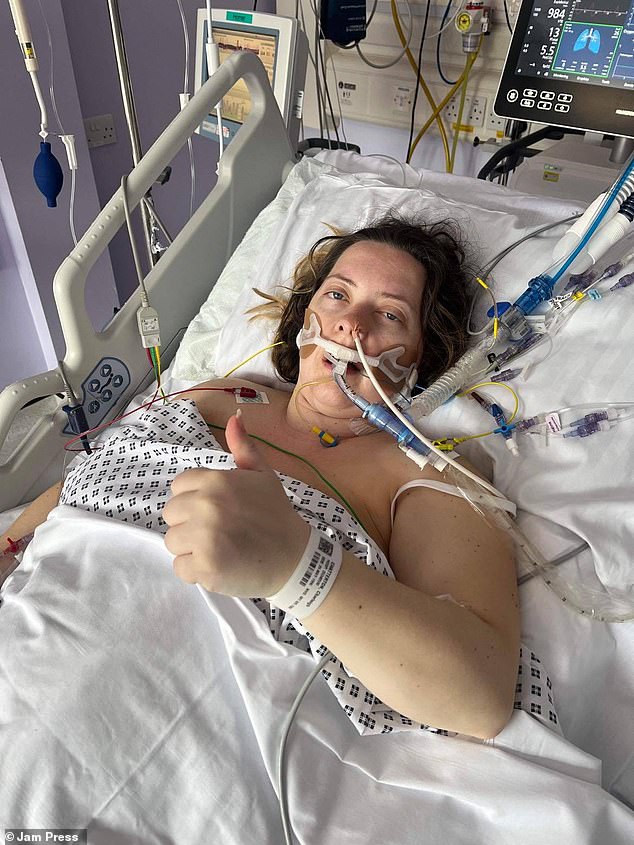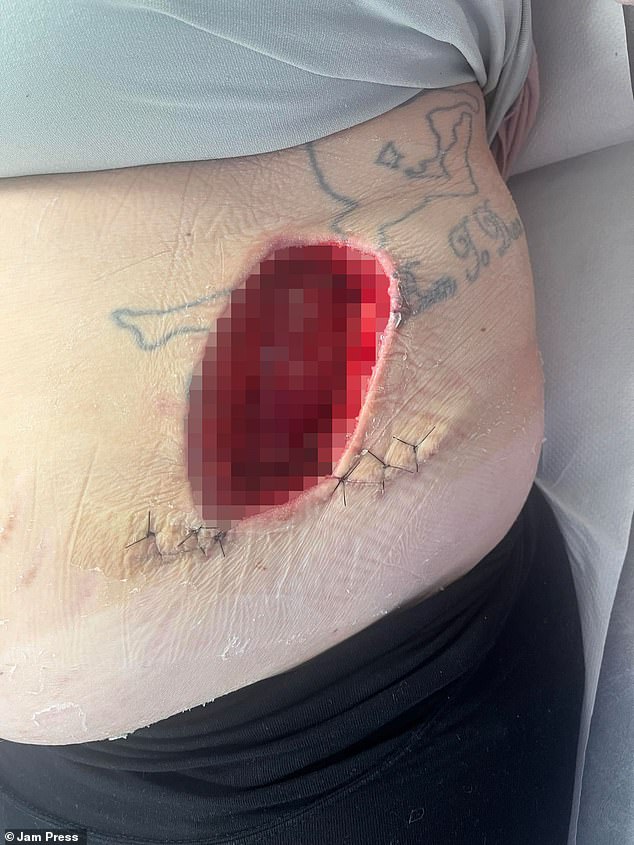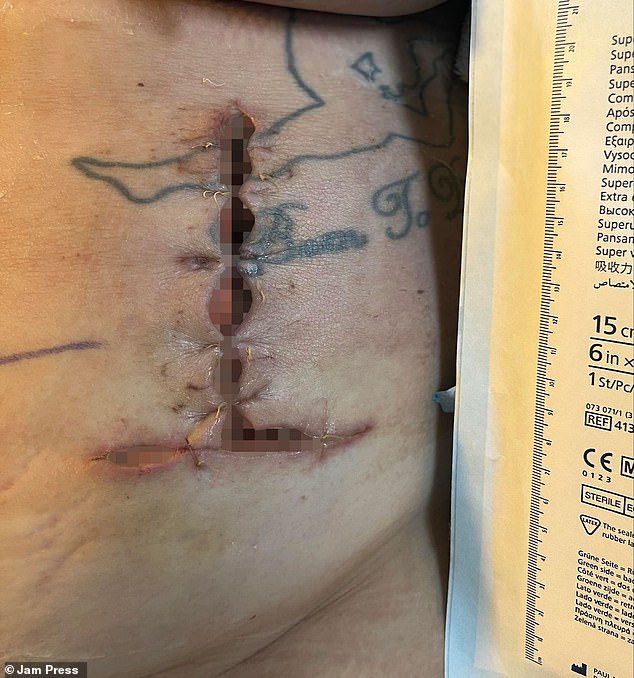An Essex woman nearly died after developing a horrific flesh-eating disease that “devoured” her abdomen days after giving birth.
Charleigh Boyne, a dance teacher from Manningtree, was rushed to hospital less than a week after the birth of her daughter in April last year when she developed a severe rash and chills that made her bones feel like they were “falling apart”.
A CT scan revealed she had a rare and sometimes fatal infection called necrotizing fasciitis (NF) that was destroying her skin and muscles.
Following a six-hour operation, Ms Boyne, 28, was put into an induced coma for two days.
Dance teacher Charleigh Boyne, from Manningtree, Essex, pictured with her husband Liam, 28, had a normal birth with her first child in April last year. But six days after bringing her newborn daughter Alessia home, the 28-year-old developed a painful rash on her stomach and was struggling to stay awake.

Ms Boyne was rushed to hospital where a CT scan revealed she had necrotising fasciitis (NF) and it was “eating away at her abdomen”.
Ms Boyne is one of 500 people who get NF each year in the UK.
According to the NHS, this “flesh-eating disease” can occur if a wound becomes infected.
The infection can cause severe pain or loss of feeling near a cut or wound, swelling of the skin, and flu-like symptoms.
Some patients will start vomiting later, have black patches on their skin and may suffer from confusion, according to the NHS.
She needed to be treated in hospital immediately and doctors warned Ms Boyne that if she did not have surgery to remove the dead flesh she would die.
“I went into labour with my daughter and it was pretty normal,” Mrs Boyne said.
‘I came home and about six days later I felt sick. I had a hive on my stomach that looked like a burn.
‘The rash was painful and I had constant chills that made my bones feel like they were going to crumble.
“I just wanted to sleep. My husband was terrified.
‘I went back to the hospital and a CT scan showed I had NF and it was eating away at my abdomen.
‘The doctors came quickly and said I needed emergency surgery or I was going to die.
“It was the strangest moment of my life. It was like in a movie where someone receives great news and everything becomes dimmer. It was an out-of-body experience.”
‘They opened me up and took out everything that was dead.
“When I woke up, they told me it had been two days and everything was going to be okay.”

According to the NHS, this “flesh-eating disease” is a rare and potentially fatal infection that can occur if a wound becomes infected.

Doctors warned Mrs Boyne that if she did not have surgery to remove the dead flesh, she would die.
Ms Boyne now suffers from post-traumatic stress disorder and has been left with a five-inch scar which she says has made it difficult for her to look in the mirror.
She said: ‘I’m better physically, but I’m still in the process of healing. I have a callus scar and I suffer from PTSD.
‘The scar really affects my confidence. I find it hard to look at myself in the mirror.
‘I don’t wear clothes where my stomach shows, but in some clothes it shows because it’s a dent.’
But she says her daughter is thriving and the illness has not prevented her from having another child.
She said: “Alessia is perfect. She loves life. She is a happy child. We would love to have more children, but I will be very cautious.”
Mrs. Boyne has created a GoFundMe to raise money for the Lee Spark NF Foundation and Colchester Hospital, Essex, whom he thanks for saving his life.
She added: ‘I’m walking a half marathon for Lee Spark, who helped me come to terms with what happened, and for Colchester Hospital, who saved my life.
“It’s important to raise awareness. Most people have no idea what NF is.
‘Even though it is rare, it is still a possibility and cannot be diagnosed if people do not know what it is.
“When it appears, it appears quickly. You can get it through a cold or an open wound.”


